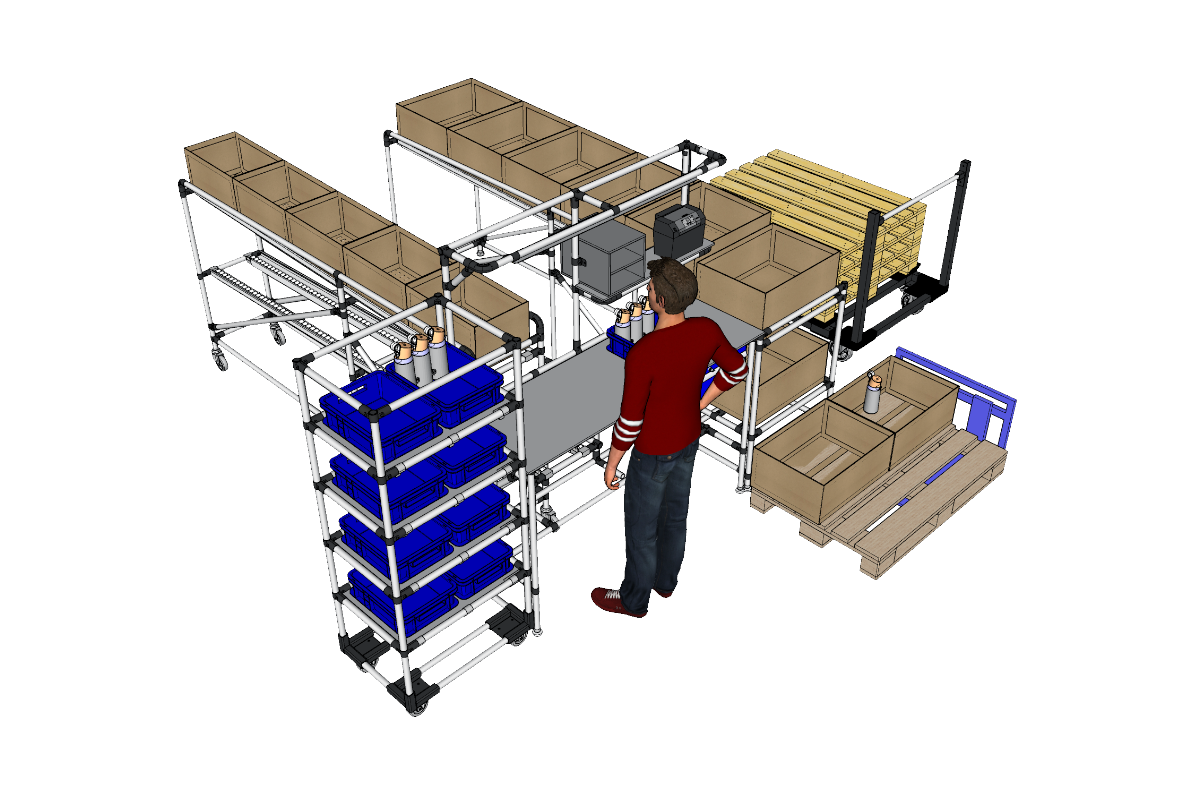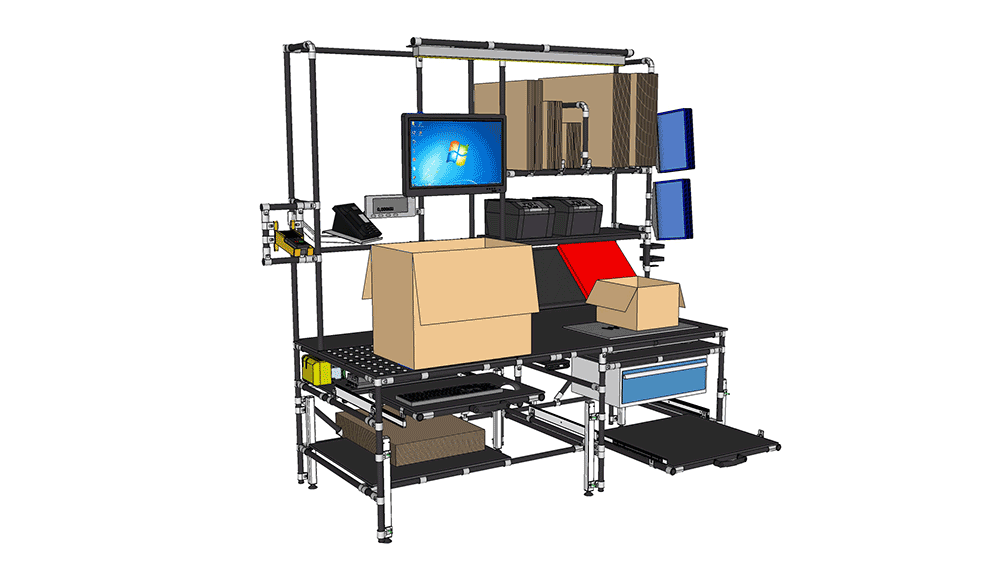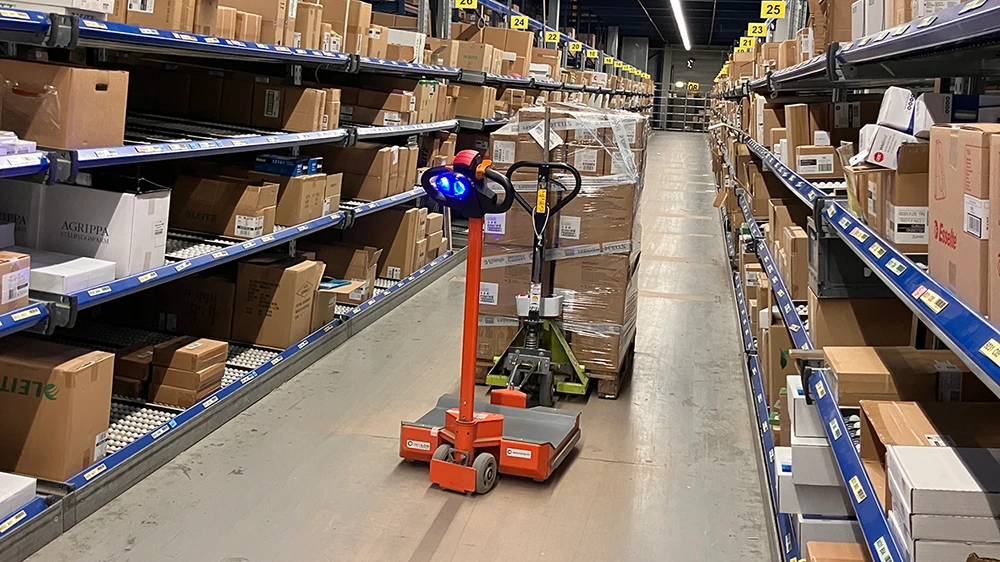Ergonomics is well established in industry. What used to be considered a side issue is now an integral part of modern workplace and process design. Many companies have implemented appropriate measures - height-adjustable desks, optimised lighting, structured storage or training courses on ergonomic work.
But in practice, this is often the case: Ergonomic design ends where it should actually begin - in thinking about the entire process. Ergonomics is far more than just a question of posture or working height. It is a System principle, that determines whether a process remains stable, efficient and human in the long term.
Ergonomics does not end with the body
Classic ergonomics focuses on physical relief - on freedom of movement, working heights and reach. This is the basis, but not the goal. A workplace can be physically optimised and still appear unergonomic if processes are illogical or information flows overwhelm people.
An example from practice:
In a pre-assembly centre, workstations were carefully set up according to ergonomic criteria - with optimum heights, reach spaces and lighting. Nevertheless, productivity fell short of expectations. The analysis showed that the material supply was irregular and employees had to wait or improvise. The system was physically ergonomic, but organisationally unergonomic.
Ergonomics does not end with the body. It begins where People, material flow and information logic work together.
Physical ergonomics: stability through movement
Movement is not a contradiction to ergonomics - it is part of it. An ergonomically designed workplace encourages changing postures and prevents forced positions. Rigid dimensional specifications, on the other hand, are rarely optimal because activities, products and shifts are different.
Example:
In one packaging line, all tables were set to a uniform height in order to standardise processes. After a short time, many employees complained of fatigue, especially in the late shifts. The introduction of height-adjustable work surfaces and customised shelves not only improved well-being - process performance also increased measurably.
Ergonomic stability is therefore created not by fixed values, but through systems that allow movement and enable adaptation. NeoLog therefore relies on Modular workstation systems, whose dimensions and equipment can be adapted to real movement profiles and process requirements - not the other way round.
Cognitive ergonomics: clarity of mind
The more complex processes become, the greater the impact of mental stress on performance and error rates. Cognitive ergonomics ensures that information is understandable, accessible and clear are.
One example:
In a final assembly, work steps, variants and test points are recorded via a Digital assistance system is displayed. The system recognises progress and only displays the information that is relevant at that particular moment. Employees no longer have to look things up or check them in parallel - they stay in the flow. The result: less cognitive strain, fewer errors, more consistent process times.
Cognitive ergonomics therefore does not reduce the amount of information, but the mental friction in the process. Displays, sensors and light signals are only useful when they are integrated into the natural perception space - at eye level, glare-free and logically structured.
Process-related ergonomics: Ergonomics in the process
Ergonomics does not end at the work surface. The process itself also determines how stressful or stable a workstation is. A workstation can be physically perfectly designed - if the supply, timing or information transfer is not right, unrest arises.
One example:
A new workstation system was introduced in an assembly line. Posture and gripping spaces were optimised, but material replenishment took place at irregular intervals. This resulted in idling, additional gripping and improvised intermediate storage areas - stresses that were initially invisible in the planning process. Only with a cyclical material flow and the connection to a digital supply tracking system stabilised the process. The result: smoother movement sequences, fewer interruptions, higher process quality.
Process-related ergonomics means:
Thinking ergonomically not just about the workstation, but about the entire process from supply and information logic to interaction with digital systems.
Digital support as an extension of ergonomics
Digitalisation is not an antithesis to ergonomics, but rather its logical development. When used correctly, technology supports people where their attention is most valuable - in precise, focussed work.
One example:
In a material provisioning system, sensors automatically register when a minimum stock level is reached and trigger replenishment via the ERP system. This eliminates the need for manual reordering and employees remain in the ergonomic picking area instead of having to compensate for interruptions or idle times.
Likewise Autonomous Mobile Robots (AMR) ergonomic when they deliver materials at the right height and avoid forced postures. Technology is no substitute for attention - it creates the framework conditions in which concentration and precision remain possible.
Systemic ergonomics: the connection between people, processes and technology
Ergonomics is not a single topic, but a unifying principle. Systemic ergonomics sees the workplace as an interface between people, processes and technology - and optimises this relationship in all directions.
NeoLog develops systems that:
- physically adaptable,
- cognitively clearly structured,
- process-related and
- are digitally expandable.
Whether picking station, packing station or assembly line - ergonomics is always the starting point at NeoLog, not the by-product. Because only when people are correctly positioned in the system can technology relieve the strain and create process quality.
Conclusion
Ergonomics is not a niche topic and has long been more than just physical relief. It is a central design criterion of modern production systems. The potential is already recognised in many companies, but is often not yet fully exploited. Only when ergonomics combines physical, cognitive, process-related and digital aspects does it realise its full potential - as the basis for efficiency, quality and stability.




